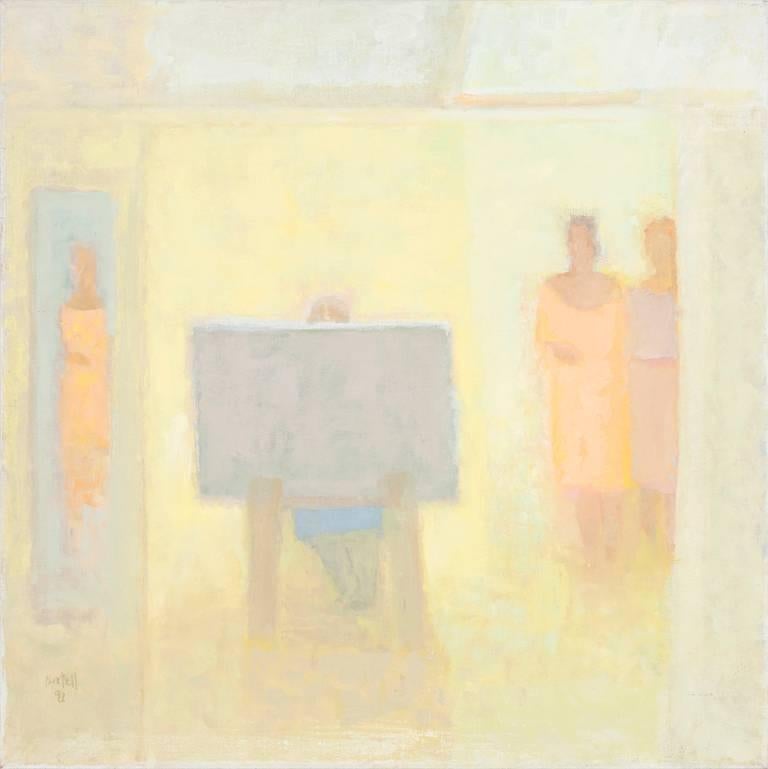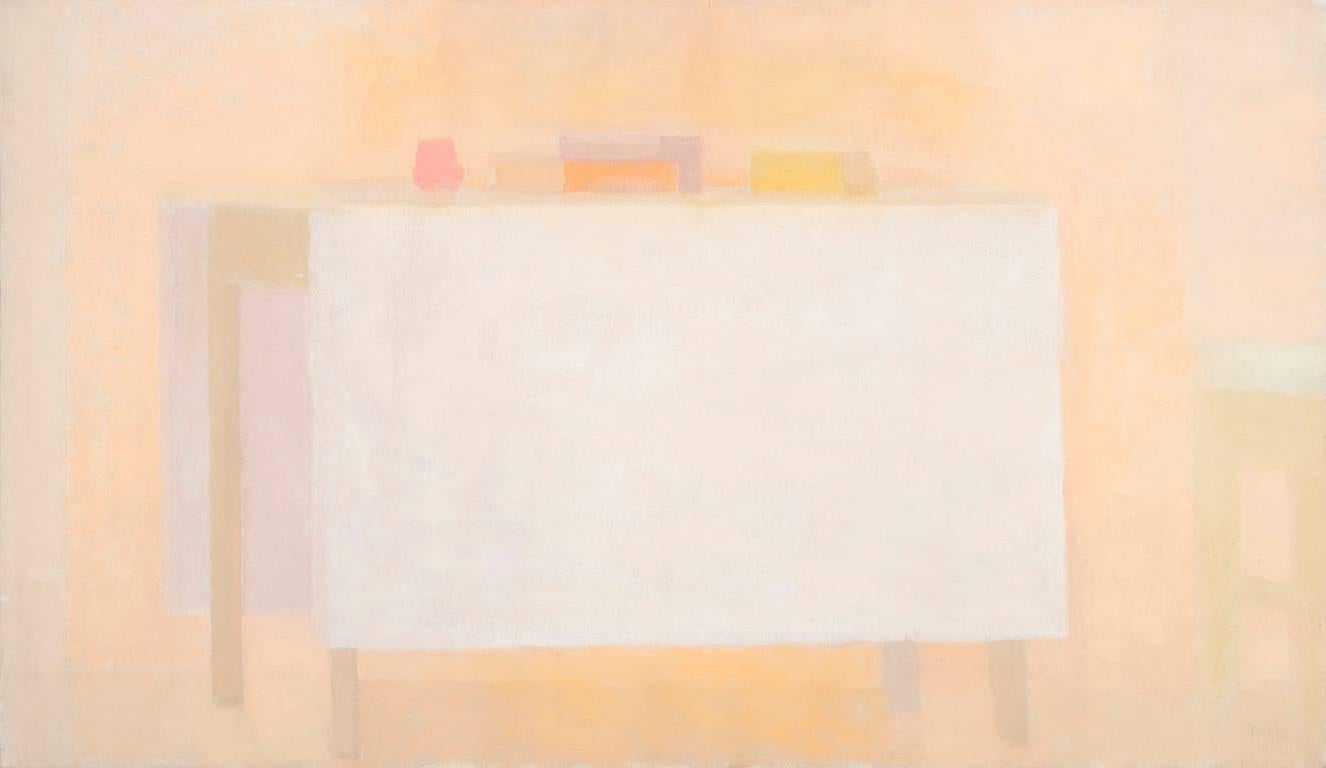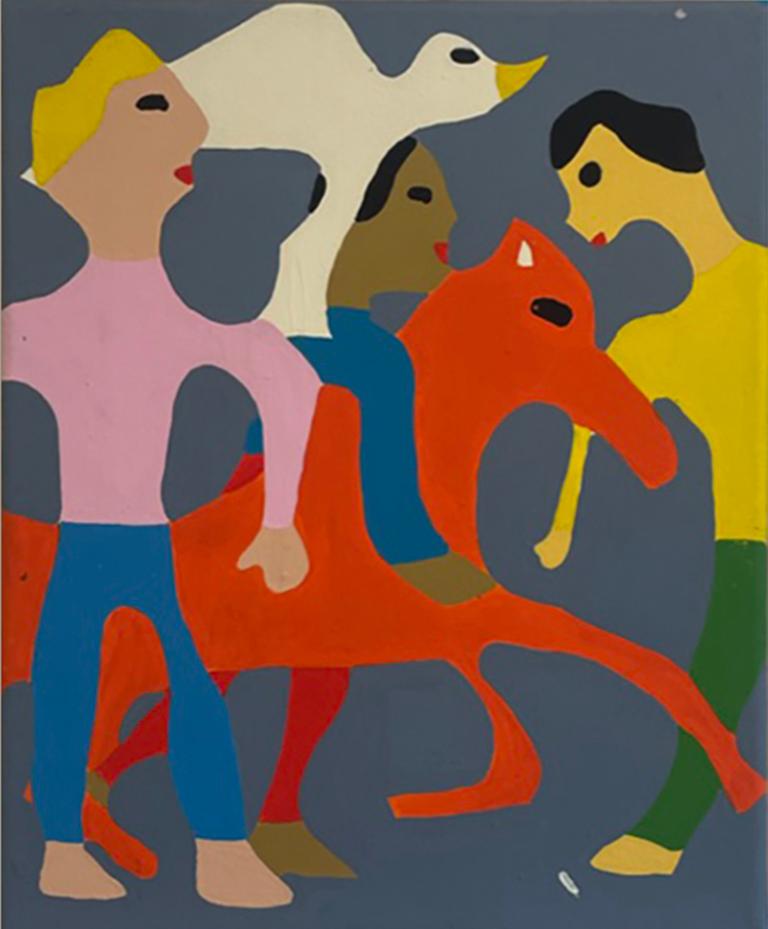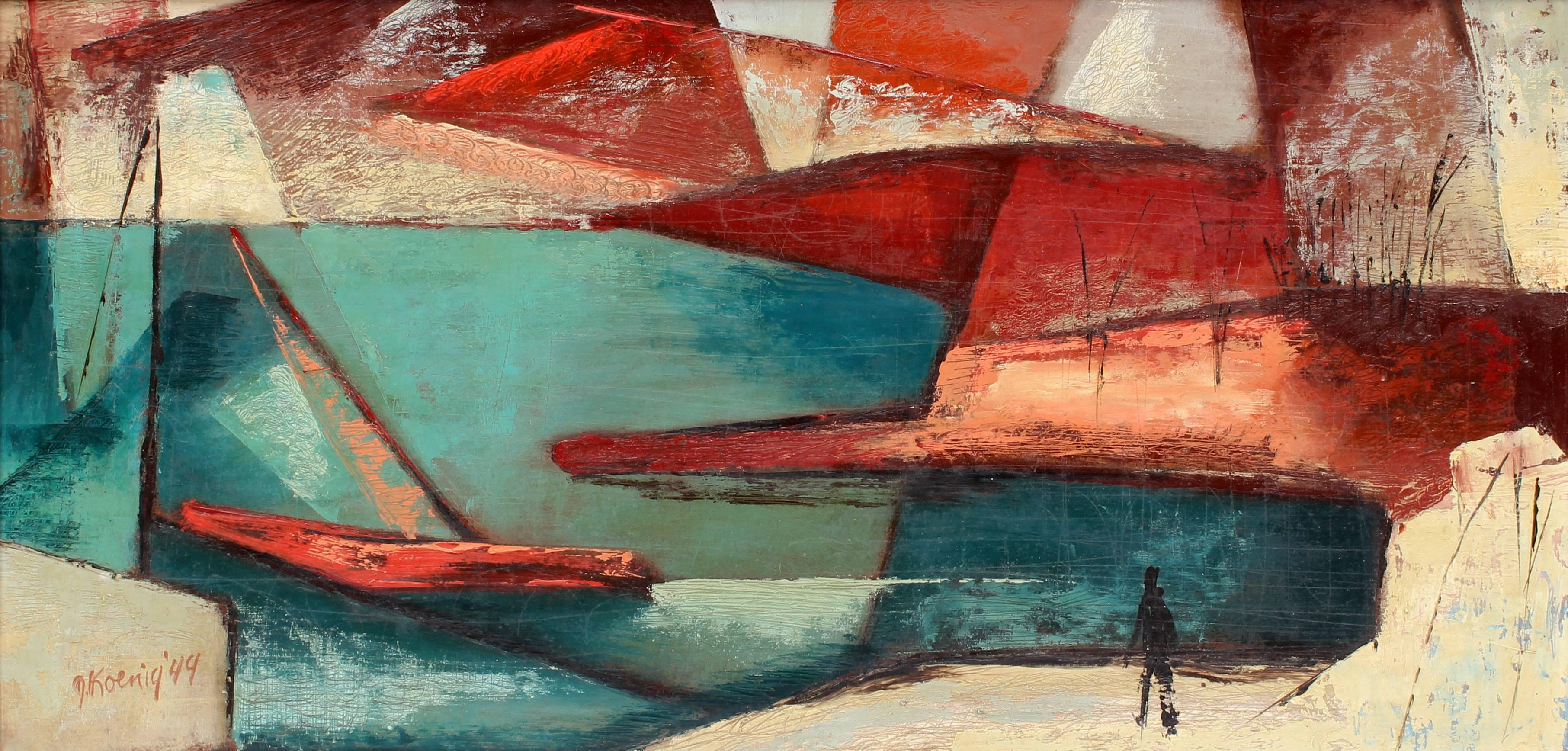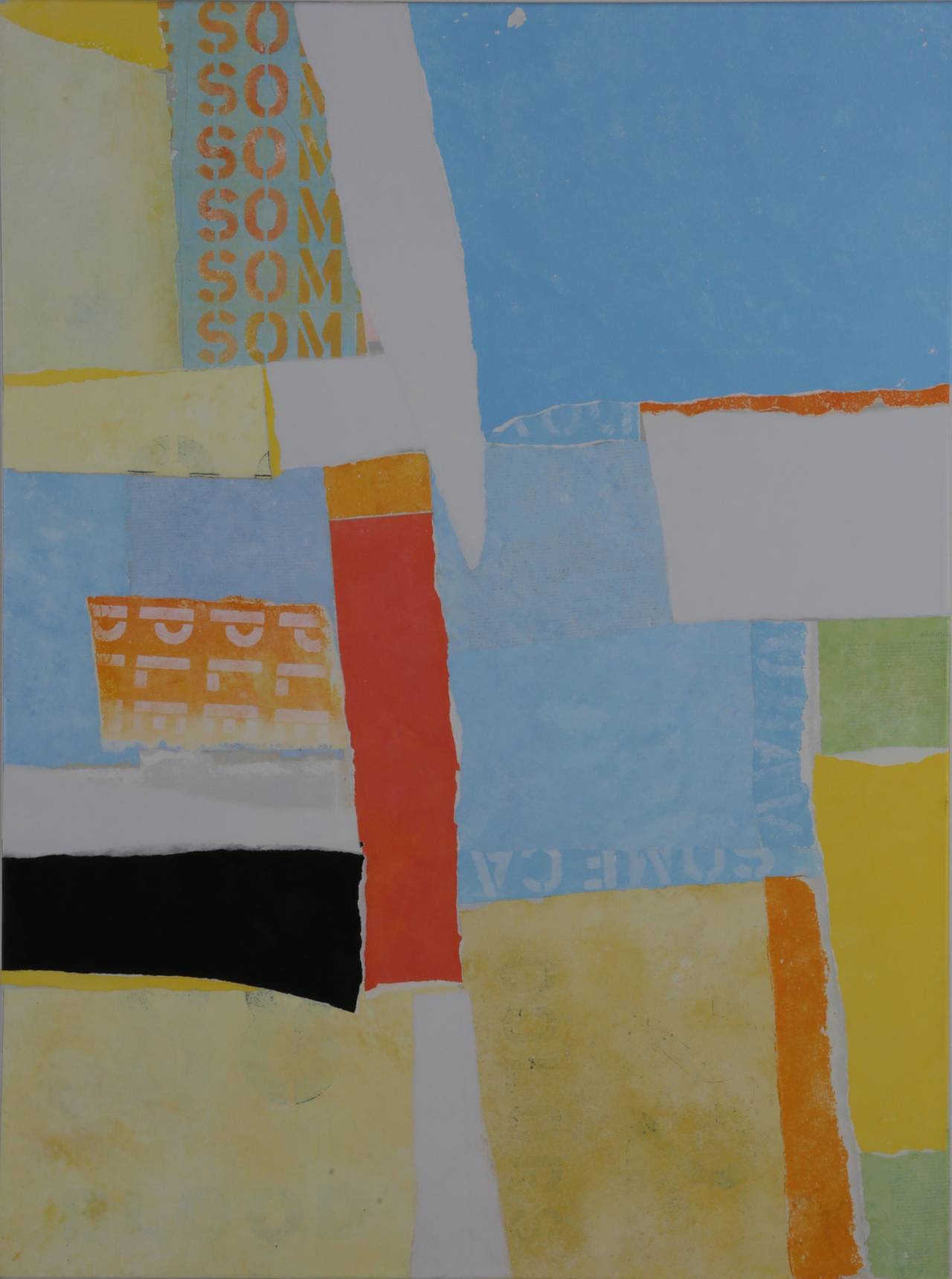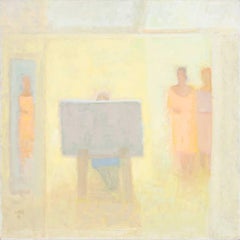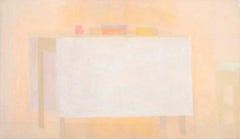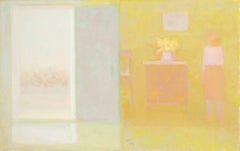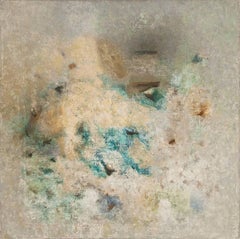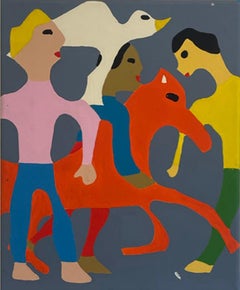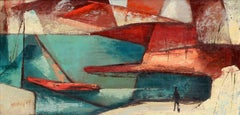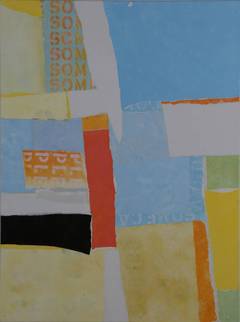Want more images or videos?
Request additional images or videos from the seller
1 of 5
John HartellSchool1986
1986
$5,800
£4,497.15
€5,100.42
CA$8,314.05
A$9,041.72
CHF 4,763.38
MX$109,813.38
NOK 59,885.30
SEK 56,137.63
DKK 38,292.49
About the Item
Valley House Gallery is honored to present a selection of paintings from the estate of American artist, John Hartell (1902-1995). John Hartell taught two disciplines at Cornell University in Ithaca, New York: freshman architecture and graduate painting. He was a much-loved professor there from 1930 until his retirement in 1967; one of his most illustrious students is the architect Richard Meier. As an artist, Hartell's first solo exhibition was in 1937 at Kleeman Gallery in New York. He exhibited at Kraushaar Galleries in New York for four decades, beginning in 1943. The Hartell Gallery at Cornell University, under the Sibley Dome, is named for him. In describing John Hartell, the artist Michael Boyd writes, "He was engaged in a kind of visual alchemy, where the visible world is transmuted into pure color and light, where objects seem to condense out of light."
- Creator:John Hartell (American)
- Creation Year:1986
- Dimensions:Height: 30 in (76.2 cm)Width: 36 in (91.44 cm)
- Medium:
- Movement & Style:
- Period:
- Condition:
- Gallery Location:Dallas, TX
- Reference Number:Seller: 205001stDibs: LU2571980253
About the Seller
5.0
Recognized Seller
These prestigious sellers are industry leaders and represent the highest echelon for item quality and design.
Established in 1954
1stDibs seller since 2013
161 sales on 1stDibs
Typical response time: 8 hours
Associations
Art Dealers Association of America
- ShippingRetrieving quote...Shipping from: Dallas, TX
- Return Policy
Authenticity Guarantee
In the unlikely event there’s an issue with an item’s authenticity, contact us within 1 year for a full refund. DetailsMoney-Back Guarantee
If your item is not as described, is damaged in transit, or does not arrive, contact us within 7 days for a full refund. Details24-Hour Cancellation
You have a 24-hour grace period in which to reconsider your purchase, with no questions asked.Vetted Professional Sellers
Our world-class sellers must adhere to strict standards for service and quality, maintaining the integrity of our listings.Price-Match Guarantee
If you find that a seller listed the same item for a lower price elsewhere, we’ll match it.Trusted Global Delivery
Our best-in-class carrier network provides specialized shipping options worldwide, including custom delivery.More From This Seller
View AllStudio X
By John Hartell
Located in Dallas, TX
Valley House Gallery is honored to present a selection of paintings from the estate of American artist, John Hartell (1902-1995). John Hartell taught two disciplines at Cornell University in Ithaca, New York: freshman architecture and graduate painting. He was a much-loved professor there from 1930 until his retirement in 1967; one of his most illustrious students is the architect Richard Meier. As an artist, Hartell's first solo exhibition was in 1937 at Kleeman Gallery in New York. He exhibited at Kraushaar Galleries in New York for four decades, beginning in 1943. The Hartell Gallery at Cornell University, under the Sibley Dome, is named for him. In describing John Hartell, the artist Michael Boyd...
Category
Late 20th Century Modern Paintings
Materials
Canvas, Oil
Dropleaf
By John Hartell
Located in Dallas, TX
Valley House Gallery is honored to present a selection of paintings from the estate of American artist, John Hartell (1902-1995). John Hartell taught two disciplines at Cornell University in Ithaca, New York: freshman architecture and graduate painting. He was a much-loved professor there from 1930 until his retirement in 1967; one of his most illustrious students is the architect Richard Meier. As an artist, Hartell's first solo exhibition was in 1937 at Kleeman Gallery in New York. He exhibited at Kraushaar Galleries in New York for four decades, beginning in 1943. The Hartell Gallery at Cornell University, under the Sibley Dome, is named for him. In describing John Hartell, the artist Michael Boyd...
Category
Late 20th Century Modern Paintings
Materials
Canvas, Oil
$10,000
Open Door
By John Hartell
Located in Dallas, TX
Valley House Gallery is honored to present a selection of paintings from the estate of American artist, John Hartell (1902-1995). John Hartell taught two disciplines at Cornell University in Ithaca, New York: freshman architecture and graduate painting. He was a much-loved professor there from 1930 until his retirement in 1967; one of his most illustrious students is the architect Richard Meier. As an artist, Hartell's first solo exhibition was in 1937 at Kleeman Gallery in New York. He exhibited at Kraushaar Galleries in New York for four decades, beginning in 1943. The Hartell Gallery at Cornell University, under the Sibley Dome, is named for him. In describing John Hartell, the artist Michael Boyd...
Category
Late 20th Century American Modern Paintings
Materials
Canvas, Oil
$11,000
Shifting
By John Hartell
Located in Dallas, TX
Valley House Gallery is honored to present a selection of paintings from the estate of American artist, John Hartell (1902-1995). John Hartell taught two disciplines at Cornell University in Ithaca, New York: freshman architects and graduate painters. He was a much-loved professor there from 1930 until his retirement in 1967; one of his most illustrious students is the architect Richard Meier. As an artist, Hartell's first solo exhibition was in 1937 at Kleeman Gallery in New York. He exhibited at Kraushaar Galleries in New York for four decades, beginning in 1943. The Hartell Gallery at Cornell University, under the Sibley Dome, is named for him. In describing John Hartell, the artist Michael Boyd...
Category
Mid-20th Century Modern Paintings
Materials
Canvas, Oil
Summer Studio
By John Hartell
Located in Dallas, TX
Valley House Gallery is honored to present a selection of paintings from the estate of American artist, John Hartell (1902-1995). John Hartell taught two disciplines at Cornell University in Ithaca, New York: freshman architecture and graduate painting. He was a much-loved professor there from 1930 until his retirement in 1967; one of his most illustrious students is the architect Richard Meier. As an artist, Hartell's first solo exhibition was in 1937 at Kleeman Gallery in New York. He exhibited at Kraushaar Galleries in New York for four decades, beginning in 1943. The Hartell Gallery at Cornell University, under the Sibley Dome, is named for him. In describing John Hartell, the artist Michael Boyd...
Category
Late 20th Century Modern Interior Paintings
Materials
Canvas, Oil
Interior 2
By Allison Gildersleeve
Located in Dallas, TX
"Behind my canvases, collages, and drawings lies a singular proposition: places are not inert; they are repositories for all that passes through them. My work is an inquiry into the ...
Category
2010s Contemporary Interior Paintings
Materials
Oil, Panel
You May Also Like
Study
Located in Hollywood, FL
Artist: James Ulmer
Title: Study
Medium: Flashe on Canvas
Size: 12 x 9 Inches
Year: 2021
Notes: Hand Signed Signed and Dated on Verso. Originally Exhibit...
Category
2010s Contemporary Figurative Paintings
Materials
Vinyl
$5,000
Untitled
By James Koenig
Located in Buffalo, NY
An original oil on canvas painting by American artist James Koenig created in 1944.
Category
1940s American Modern Abstract Paintings
Materials
Canvas, Oil
Untitled
By Charles Miesmer
Located in Fairfield, CT
Acrylic and paper on panel
Category
21st Century and Contemporary Contemporary Abstract Paintings
Materials
Mixed Media
Untitled
By Robert Hammerstiel
Located in Wien, 9
Robert Hammerstiel (1933–2020), Untitled
Robert Hammerstiel, born in Vršac (Serbia) and passed away in Neunkirchen, left behind a unique artistic legacy. His works are characterized...
Category
Late 20th Century Abstract Figurative Paintings
Materials
Canvas, Oil
Untitled
Located in Vancouver, CA
Ron Stonier (1933-2001) was a dedicated Vancouver artist celebrated for his exploration of abstract painting, influenced by his mentors Gordon Smith and Jack Shadbolt, as well as by ...
Category
1960s Abstract Abstract Paintings
Materials
Canvas, Oil
Untitled # 7
By A.J. Fries
Located in Buffalo, NY
A contemporary oil painting on linen by American artist A.J. Fries.
Artist’s Statement:
These works are an extension of a small series of realistic paintings that I did of graves...
Category
21st Century and Contemporary Contemporary Figurative Paintings
Materials
Linen, Oil
More Ways To Browse
John Houser
Michael Boyd
19th Century Portraits Of Women
Dutch Golden Age
Impressionist Oil Paintings Paris
Large English Landscape Oil Painting
Monochromatic Art
River Thames
Impressionist City
Rural Landscape Painting
Water Ripple
Desert Painting
Modern Original Oil Paintings
Oil Can
Oil Cans
Outsider Artist
Montmartre Paris
Pastoral Landscapes
